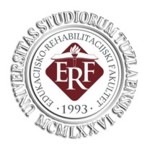ADDRESSING DAILY LIVING SKILLS, HEARING HANDICAPS, AND QUALITY OF LIFE IN CLINICAL PRACTICE
Keywords:
rehabilitation, strategies, techniquesAbstract
To explore how qualitative responses from adults who are deaf and hard of hearing contribute to a more comprehensive and nuanced understanding of the predictive quantitative relationship between age, gender, hearing handicap, and instrumental activity of daily living performance. Mixed-methods research design utilizing a concurrent triangulation strategy. The survey was conducted on a web-based platform. Participants had one month to respond. 636 adults aged 18-64 with hearing loss and English proficiency were recruited through convenience sampling. Measures included two open-ended questions to understand the participants' lived experiences, the Hearing Handicap Inventory for Adults, Assessment of Quality of Life-8D, and Lawton Instrumental Activities of Daily Living Scale. Qualitative thematic analysis revealed varied impacts on quality of life and daily living performance, with adaptive strategies and assistive devices playing crucial roles. Quantitative analysis indicated significant correlations between hearing handicap, instrumental activities of daily living, and quality of life. This study highlights the need to comprehensively address daily living skills, hearing handicaps, and quality of life in clinical practice. Clinical practitioners must adopt a multifactorial approach when working with adults who are deaf or hard of hearing. Future research should determine effective intervention approaches.
Downloads
Downloads
Published
How to Cite
Issue
Section
License

This work is licensed under a Creative Commons Attribution-NonCommercial-NoDerivatives 4.0 International License.







